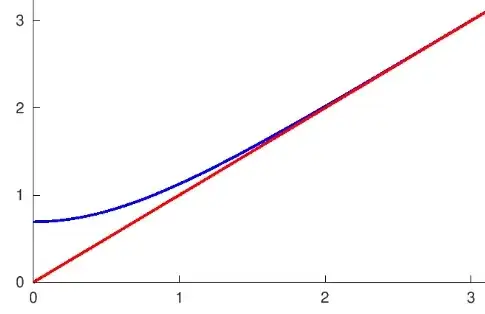Given two recurrence relations
$x_{n+1}^2 = x_n^2 + \frac{c_1^2}{x_n^2}$ and $y_{n+1}^2 = y_n^2 + \frac{c_2^2}{y_n^2}$ for $c_1, c_2\in \mathbb{R}^+$ and $x_1=y_1=c_3\in\mathbb{R}^+$.
We want to study the convergence properties of $r_n := \frac{y_n^2 c_1}{x_n^2 c_2}$ as $n\rightarrow \infty$.
I strongly suspect that $r_n$ converges to 1 as $n\rightarrow \infty$ but am unable to prove it yet. I was also able to show that 1 is its the only fixed point and an attractor in the sense that $r_n > 1 \Rightarrow r_{n+1} < r_n$ and $r_n < 1 \Rightarrow r_{n+1} > r_n$. I was then able to prove that the $r_n$ does converge, as $r_n$ is strictly monotonous for $n\geq 2$. I would like to show that $r_n$ cannot asymptotically near another limit than 1 or find a counter-example for it.
